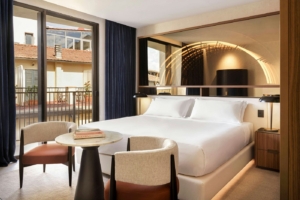The luxury real estate market has evolved from a niche sector to one of the most prominent and influential forces in the global property landscape. No longer confined to elite urban enclaves or coastal getaways, luxury properties have become a significant driver in real estate markets worldwide, attracting not only ultra-high-net-worth individuals (UHNWIs) but also aspirational buyers seeking premium experiences, top-tier amenities, and the social prestige that comes with high-end property ownership. This rise is fueled by several factors that shape the luxury real estate market, including economic growth, technological advances, evolving consumer preferences, and global connectivity.
1. Economic Factors and Market Stability
The luxury real estate sector is particularly resilient, often weathering economic fluctuations better than other real estate segments. Wealthy individuals are less impacted by economic downturns and tend to view luxury properties as stable, long-term investments. During times of economic uncertainty, demand for luxury real estate can actually increase as affluent buyers seek to diversify their portfolios, often moving assets into safe-haven markets known for property stability. Additionally, the robust growth of wealth in regions like Asia-Pacific, the Middle East, and parts of Europe has expanded the pool of buyers, increasing demand and driving up values in premium real estate markets worldwide.
2. Evolving Buyer Expectations and Amenities
Today’s luxury real estate buyers seek more than just beautiful properties—they’re looking for tailored experiences and state-of-the-art amenities that align with their unique lifestyles. High-net-worth individuals (HNWIs) are increasingly interested in properties that combine luxury with sustainability, such as energy-efficient smart homes or developments that incorporate eco-friendly materials and practices. Features like home automation systems, private spas, panoramic views, concierge services, and proximity to exclusive amenities have become the new standard in high-end real estate. This demand for enhanced experiences has pushed developers to reimagine and elevate their projects, prioritizing bespoke design, sustainability, and wellness-focused spaces.
3. Technological Innovations in Luxury Real Estate
Technology has transformed the luxury real estate sector, both in terms of how properties are marketed and the kinds of features buyers expect. Virtual tours, 3D rendering, and virtual reality (VR) have made it easier for potential buyers to explore properties from anywhere in the world, expanding market reach and attracting international interest. Additionally, smart home technology has become a critical component in high-end properties. Luxury homes now feature integrated systems for lighting, security, climate control, and entertainment, all accessible from a smartphone or tablet, offering unparalleled convenience and security.
4. Global Mobility and the Growth of “Branded Residences”
As global mobility increases, luxury buyers are increasingly interested in branded residences—luxury homes associated with prestigious brands like Four Seasons, Ritz-Carlton, and Aston Martin. These branded residences offer buyers the security of investing in a brand they trust, along with a suite of amenities and services they’re accustomed to. Many affluent individuals prefer to live in cities that allow them to travel conveniently, so developments close to international airports and business hubs have gained popularity. Branded residences offer a seamless, lifestyle-focused experience that aligns with the expectations of today’s luxury buyers.
5. The Impact of Social Media and Digital Influence
Social media has had an undeniable impact on the luxury real estate sector, helping to drive demand for high-end properties. Platforms like Instagram, YouTube, and Pinterest have given luxury properties unprecedented exposure, allowing potential buyers to browse and explore real estate through images and video content that showcase stunning architecture, interiors, and surrounding environments. Additionally, social media influencers and digital real estate platforms amplify the exclusivity and desirability of certain properties, helping developers and agents reach a broad yet targeted audience interested in luxury living.
Conclusion
Luxury real estate has evolved into a dominant force within the property market, fueled by global wealth, shifting consumer priorities, technological advances, and digital connectivity. Buyers today are more discerning, expecting properties that go beyond aesthetics to offer premium experiences, cutting-edge technology, and a focus on sustainability. For developers, this means there’s a new standard for luxury properties, one that emphasizes both opulence and practicality. As this trend continues, the luxury real estate market is expected to grow even further, setting new benchmarks for quality, innovation, and exclusivity.












